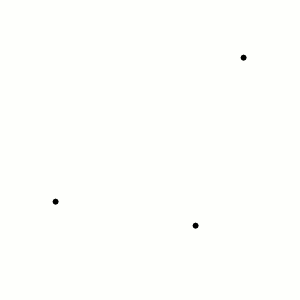emergence | thinkthinkthink #7
on the most characteristic element of complex systems
Look to the ant, thou sluggard; Consider her ways and be wise: Which having no chief, overseer, or ruler, Provides her meat in the summer, And gathers her food in the harvest. —PROVERBS 6:6–8
Cities exhibit emergence: this means that the behavior of the city as a whole is more complex than the sum of all individual actions and transactions. In this context the third law of British science-fiction author Arthur C. Clarke might be reworded as: “any sufficiently complex entity is indistinguishable from magic.” Technology is helping in understanding and generating behaviors that one hundred years ago might have been equated to magic: the blinking coordination of certain species of fireflies, recommendation algorithms or urban mobility systems. In each of these processes behavior emerges bottom-up through simple rules leading to higher-order abstractions.
More pertinent to planning, this kind of nonlinear complex behavior makes quantitative prediction extremely difficult; almost always mathematically unfeasible. Having a high-resolution detailed snapshot of a city is interesting but of little use. Scott illustrates how detailed but isolated data is similar to the picture of a flowing river: despite the clarity of the initial data, the river is dynamic. It is constantly moving, changing it's shape, speed & flow. Having a detailed snapshot of all relevant urban data would still make interaction calculations impossible: the computational requirements would be orders of magnitude more difficult than the already immense amount of data required. This is evident in much simpler systems: because of advances in sequencing DNA we can trace monogenic diseases, but as soon as the number of genes involved in a disease goes up, our ability to understand and unpack the disease falls apart.
There is a similar problem in astronomy: the three-body problem. Using Newton's laws of motion and universal gravitation we can indefinitely predict the positions of two bodies acting gravitationally on one another. As soon as we add a third body however, prediction becomes fleeting. While the system is still deterministic, it's impossible to write down a general formula that can accurately describe the motion of three or more gravitating objects. There are just too many variables to solve for. Adam Ferguson condensed complexity into words back in 1782:
Every step and every movement of the multitude, even in what are termed enlightened ages, are made with equal blindness to the future; and nations stumble upon establishments, which are indeed the result of human action, but not the execution of any human design.
Hayek termed it spontaneous order. But another Adam claims the most famous analogy:
Every individual... neither intends to promote the public interest, nor knows how much he is promoting it... he intends only his own security; and by directing that industry in such a manner as its produce may be of the greatest value, he intends only his own gain, and he is in this, as in many other cases, led by an invisible hand to promote an end which was no part of his intention.
In Rebel Cities, David Harvey claims that any alternative to the dysfunctional contemporary form of globalization "will have to come from within multiple local spaces - urban spaces in particular - conjoining into a broader movement”. It’s ironic to consider how an emergent hand might be what guides these communities. The breakdown of global supply chains caused by the ongoing pandemic illustrates the need to reimagine communities as the distributed engines of the future. With impending climate disaster and exponential unsustainable growth approaching collapse, taking into account complexity and emergence in planning our cities might be crucial in confronting the difficult exams of the coming decades: if we fail, we do not get a second chance.
One Book
Order without Design by Alain Bertaud
This is a fantastic book trying to bridge the past of qualitative and instinctual planning to the still non-existing future of a science driven by data. Bertaud makes sensible points about transportation, density, and housing. The general approach of the book is that bottom-up development driven by free-markets is most often hindered by artificial planning which is neither grounded in reality, nor able to adapt to change.
Three Links
Generating Wholes by Joe Norman
On tearing down the dichotomy and linear thinking between parts and wholes.
When Biology Isn’t Messy by Hessam Akhlaghpour
How running in degraded mode does not make something less elegant (and mechanical gears in insects.)
Mumbai’s Iconic Art Deco Buildings Were Made to Conquer Disease by Ronojoy Mazumdar
On Bombay Deco, epidemics and architecture.
Five Tweets
This was the seventh issue of Think Think Think - a periodic newsletter by Joni Baboci on cities, science and complexity. If you really liked it consider sharing it with your network (or that one guy who you think might really enjoy this one):
Thanks for reading; don't hesitate to reach out at dbaboci@gmail.com or @dbaboci.










In the topic of emergent urbanism, I find Mathieu Helie pretty interesting: http://emergenturbanism.com/2009/02/16/the-complex-grid/